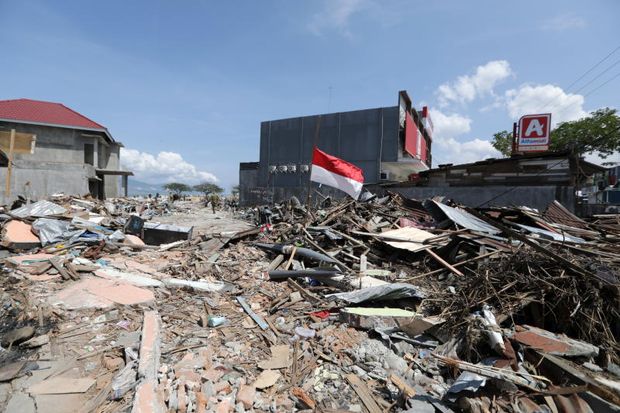
PALU, Indonesia: Survivors of Indonesia's double disaster looked to their future with frustration and despair on Wednesday as the government outlined plans to begin reconstruction of homes for tens of thousands of people.
The official death toll from a 7.5 magnitude earthquake and tsunami on Sept 28 has risen to 2,045, with more bodies being found as some 10,000 rescuers scour ruins in the seaside city of Palu.
More than 82,000 people were displaced in the worst-hit city of Palu, 1,500km northeast of the capital, Jakarta, and 67,000 homes destroyed or damaged.
Many survivors are living in shelters made out of salvaged wood and plastic in the city and surrounding hills, where they wait and wonder what will happen to them.
"They keep saying there's going to be compensation, but where is it?" asked student Ahmad Hidayat.
Hidayat is from the city's Balaroa district, which was devastated by liquefaction, which happens when an earthquake violently shakes soft, damp soil, turning solid ground into a viscous, roiling liquid.
"What are the plans? Are we going to be relocated, will there be help to move people back? There's no certainty,” said Hidayat, standing in a heavily damaged garage where he works part-time with other young men, trying to salvage auto parts from the debris.
Another Balaroa resident, Hesti Andayani, 27, was sitting and crying on tiles that she said used to be part of her bedroom. It was her first trip home since the earthquake struck, killing her younger sister.
"I don't know what we'll do. We don't have any money. I'll have to find a job but I don't know where we can live," she said.
Rescue teams were working with residents to try to identify where victims could be. But it's guesswork because of how far the ground moved during liquefaction.
No one knows how many people have yet to be found in Balaroa and other neighbourhoods but it could be as many as 5,000, the disaster agency says.
BODY BAGS
Twenty-six bodies were found on Tuesday but the number seemed to fall off on Wednesday. Reuters reporters saw only two victims being carried out in plastic body bags.
The government has called off the search for bodies from Thursday, citing concern about the spread of disease.
That has angered many relatives of the missing but it will focus the efforts of authorities on the next phase - rebuilding.
"Reconstruction and rehabilitation are scheduled to start in early November," Sutopo Purwo Nugroho, spokesman for the national disaster mitigation agency, told a briefing in Jakarta.
He said data was being compiled and mapping done to help determine where houses should be built.
The danger of tsunamis near the coast in the north of the city and of soil liquefaction in the south are the major worries.
Areas hit by liquefaction will be turned into parks and sports fields and memorials.
Nugroho declined to speculate on how long it would take to build new houses.
The chief executive of the World Bank, Kristalina Georgieva, offered Indonesia various help on Wednesday including financing for the reconstruction and rehabilitation of housing and neighbourhood-level infrastructure and services.
Georgieva made the offer in talks with Indonesian Vice President Jusuf Kalla on the sidelines of annual meetings of the World Bank and International Monetary Fund on the resort island of Bali.
Sulawesi is one of Indonesia's five main islands. The archipelago sees frequent earthquakes and occasional tsunami.
In 2004, a quake off the north Indonesia island of Sumatra triggered a tsunami across the Indian Ocean that killed 226,000 people in 13 countries, including more than 120,000 in Indonesia.
Also see:
- Dozens found dead in Indonesia church as toll tops 1200
- Indonesia rushes to help quake-hit island; thousands feared dead
- Prison break: convicts on the run after Indonesia disaster
- Indonesia tsunami toll tops 800 amid search for survivors
- Distraught Indonesians in grim search for family members
- Indonesian air traffic controller hailed as quake hero